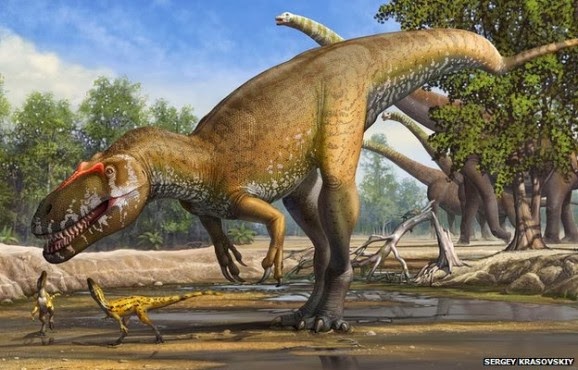Fossils of biggest European predator ever found
I had no idea that Portugal was home to what scientists now
believe was Europe’s largest predator ever — the Torvosaurus gurneyi. It’s
always nice when we add to dino-discoveries, rather than take away.
Torvosaurus gurneyi was no joke — at over 30 feet long and
weighing about five tons, this dinosaur could have given a T-Rex a run for its
money — that is, if they had lived in the same time period. Torvosaurus is an
earlier species, living in the late Jurassic period, roughly 150 million years
ago. That’s about 80 million years before the good ol’ T-Rex, which shares many
of its characteristics, including bi-pedal movement and a penchant for snacking
on anything alive. Of course, that means Torvosaurus gurneyi had particularly
impressive teeth that helped it establish its dominance.
Apparently, Portugal is a hotbed of former dinosaur activity
and a popular spot for paleontologists. Back in the day, the area would have
been lush with fauna — a tropical paradise for dinosaurs. Herbivore dinosaurs
would have been plenty happy, which means the carnivores would have too.
Paleontologists found Torvosaurus fossils not far from Lisbon in the Lourinha
rocks. Their findings are described in Plos One, and include not only bone
fossils, but eggs and embryos as well. The fossils, particularly of the
dinosaur’s maxilla, confirm its distinction from the Torvosaurus tanneri, a
related dinosaur that used to hang out in North America. Scientists weren’t
sure that the two were different species until now. Scientists believe that the
dino-cousins have a common ancestor somewhere down the line, most likely from
before the formation of the Atlantic Ocean. The separation of the species had
to have happened well before 150 million years ago.
As big as the Torvosaurus was, it’s not the biggest dinosaur
in the world. T-Rex, Giganotosaurus, and Carcharodontosaurus were all bigger,
and some herbivores such as sauropods would have outsized it. Still, it’s the
largest carnivore Europe has ever known, and another piece of evidence in the
evolutionary trajectory of dinosaurs, as well as the formation of the
continents.




No comments:
Post a Comment